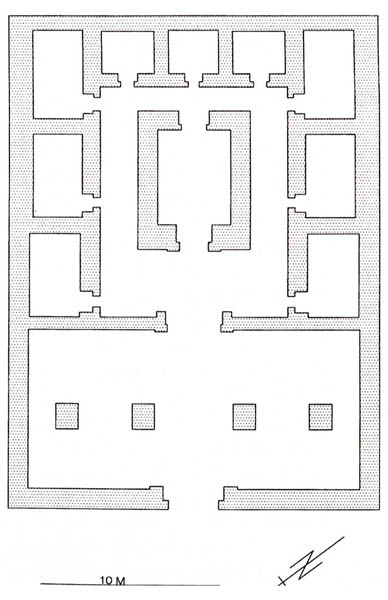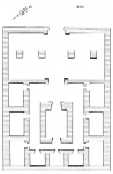
 el-Tod
el-Tod
Site
of ancient Djerty (Graeco-Roman Tuphium), is 20 km southwest of Luxor and is on the
east bank of the Nile. It is known to have had a small mud-brick temple in the 5th dynasty and also had a local cult
of the god Montu from Middle Kingdom times.
Tod Treasure was discovered in 1936
by a French team led by Fernand Bisson de la Roque beneath a 5th-century AD mud-brick church, excavators came upon a temple
of Senusret I. Here, in the stone foundations, had been concealed the 'Tod Treasure'.
Major building activity, in association with this cult, was completed by Mentuhotep I (Tepy-a
'the ancestor') and Senusret I (Kheperkara c.1956-1911 BC), although their temples are now mostly destroyed. There was also,
as early as the reign of Userkaf (c.2494 - 2487 BC) in the 5th dynasty, a small chapel here - blocks from this and later
structures may be seen in a small open display of artefacts at the site.
The surviving monuments of Tod are of New Kingdom and later date. A partially preserved
barque shrine of Montu built by Thutmose III (Men-kheper-Re) and restored by Amenhotep II (Aakheperu-Re), Sety I (Men-Maat-Re
c.1294 - 1279 BC), Amenmesse (Menmira c.1203 - 1200 BC), Ramesses III (User-Maat-ra Mery-Amun c.1184-1153 BC) and Rameses
IV (Heqamaatra Setepenamun) stands before a small temple constructed in the Ptolemaic and Roman periods. This is the main
temple still standing at Tod and was begun by Ptolemy VIII Euergetes II (c.145 - 116 BC) and consists of a columned court
and hall with various chambers, including a hidden treasury room above the chapel on the south side of the hall. The temple
was built in front of and connecting with Senusret I's earlier structure - only the front wall of which now survives, though
this has good examples of later usurpation and re-workings. A Roman kiosk was located near the Ptolemaic temple.
A larger temple of Thutmose III is believed to lie outside the area of ruins, under the
mosque. The location of the mosque and the beginning of additional ruins are visible some of the images.
The following shows where the images where taken from and should give a better idea of
the temple's structure and form.

![]()
![]()
![]()



Sources:
Ian Shaw and Paul Nicholson, The British Museum Dictionary of Ancient Egypt, The British Museum Press
Steven Snape, Egyptian Temples, Shire Egyptology
Richard H Wilkinson, The complete Temples of Ancient Egypt, Thames & Hudson
Dieter Arnold, The Encyclopaedia of Ancient Egyptian Architecture, I. B. Taurus
Nicholas Reeves, Ancient Egypt The Great Discoveries, Thames & Hudson